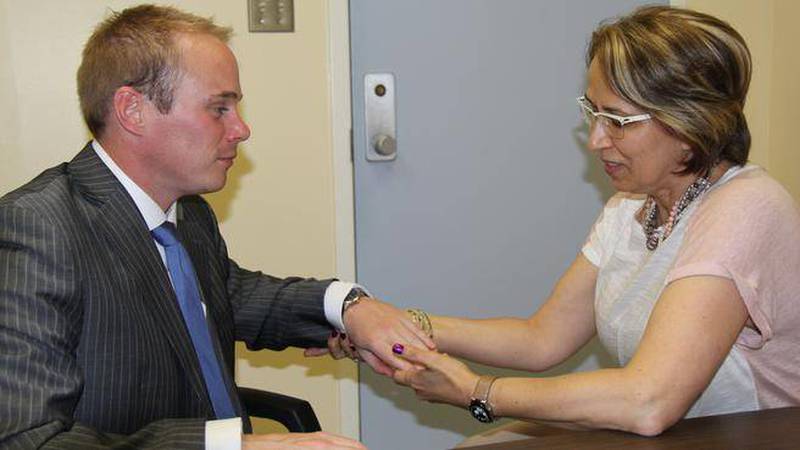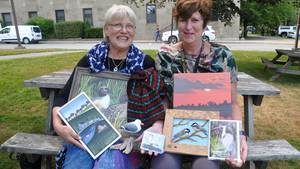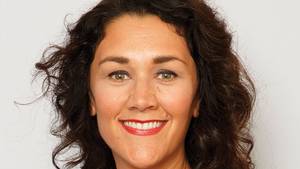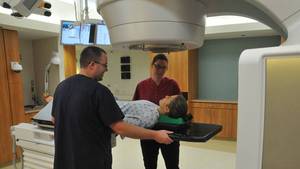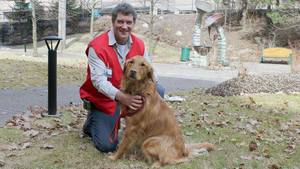For Anthony Brown, victory came the day he stepped on to a golf course again and took his first drive. It had been a long struggle. A car pedestrian accident in 2009 left him with a traumatic brain injury, paralyzed on his left side, unable to walk or use his left hand. But Anthony is a persistent man.
“I’m stubborn. When I was discharged from the hospital I got it in my mind that if I could somehow get my left hand to stay on the golf club I could play. I tried tying my hand on the club. I tried duct tape. Eventually I found something called a Power Glove, a grip aid designed to teach people how to play golf. It was five months after my accident, in June that I played my first game of golf.”
A remarkable milestone, and one that was greatly helped by a team of doctors, occupational therapists, physiotherapists, nurses and many others at the QEII’s Nova Scotia Rehabilitation Centre. Today Anthony is 30 years old, a successful real estate agent, husband and father. He plays golf and squash regularly and is able to drive a car again, but he admits he’s still got a long way to go in his recovery.
“With my personality I don’t think I’ll ever be fully satisfied, but I’m very happy with how far I’ve come.”
He’s getting help from a new outpatient program that started at the Rehabilitation Centre in April. The Interdisciplinary Spasticity Management Program, accessible through physician referral, gives patients suffering from stroke complications, spinal cord injury, traumatic brain injury, multiple sclerosis, cerebral palsy and other conditions access to a full team of experts from a variety of medical fields. It’s an innovative idea in the treatment of spasticity, a complex condition where muscles become overactive and contract or become tense when they shouldn’t.
“We’ve been doing spasticity management for a long time, but the interdisciplinary team is a new concept for us,” says Dr. Amra Saric, a physiatrist at the Rehabilitation Centre who is part of the spasticity management team. “These are very complex patients. With a team like this we can see the problem from all perspectives at the same time and figure out how we can best achieve the patient’s and caregiver’s goals and improve their quality of life.”
That improvement can take many forms. For some patients, like Anthony, it can mean getting out of the hospital and back into daily life, taking part in simple tasks like changing his new baby’s diapers. For more severe patients it can be something as fundamental as experiencing less pain when they are being dressed by a nurse.
“We’ve got a whole spectrum of goals,” says occupational therapist and spasticity clinic coordinator, Joy Boyce. “Sometimes the goal is walking or reducing falls. Sometimes it’s reducing pain or being able to use a wheelchair or simply maintain a patient’s range of motion.”
The clinic gives patients access to the latest in spasticity treatment, from new exercise and stretching programs to bracing, state-of-the-art rehabilitation technology and the latest medications. Dr. Saric uses the same regular Botox injections that have become famous as a cosmetic wrinkle remedy to control the effects of spasticity in many patients.
“That’s why the clinic is so important,” says Joy. “Because we know that with spasticity, one treatment is never going to be enough and these patients need to be followed long term by our team.”
For more information on the Interdisciplinary Spasticity Management program, please visit cdha.nshealth.ca/rehabilitation-supportive-care-services/interdisciplinary-spasticity-management-program- isp-clinic.

